 |
 |
 |
| |
HIV Risk Dropped 65% in Seattle Area MSM Born After Mid-1960s
|
| |
| |
IAS 2015, July 19-22, 2015, Vancouver
Mark Mascolini
Cumulative risk of HIV diagnosis rose steadily among Seattle area men who have sex with men (MSM) born from 1940 through 1964, then dropped dramatically in men born after the mid-1960s [1]. HIV risk fell in both white and black MSM born after 1964, though racial disparities persist in this King County population. Researchers from the University of Washington and the Public Health department believe their findings "suggest that King County may be aging out of the HIV epidemic."
MSM account for more than 60% of new HIV cases in the United States, the King County investigators pointed out. While overall HIV incidence may be dropping across the country, incidence is stable among all MSM and climbing among black MSM. Because statisticians can use life tables to estimate lifetime risk of HIV diagnosis, the King County team constructed life tables for 1982 to 2012 to estimate cumulative HIV risk among MSM born from 1940 to 1994 (72 and 18 years old in 2012). They used US Census data to count black and white men in King County, national and local data to estimate the proportion of men who are MSM, and local surveillance numbers to define the number of new HIV diagnoses (incidence) in area men each year.
The researchers divided MSM into 5-year birth-year clusters, starting with 1940-1944 and ending with 1990-1994. When they graphed cumulative HIV diagnosis risk in those 11 groups among white MSM, a striking pattern emerged. In the 1940-1944 group, cumulative HIV risk reached 15%. In the 1945-1949 cohort, that risk rose to 25%. Cumulative HIV risk climbed ever upward until it hit about 40% in the 1960-1964 cohort. Then HIV risk started falling by birth-year cohort and kept falling in each successive age group until it stood below 5% in the 1990-1994 group.
Charting cumulative HIV risk in black MSM revealed the same pattern, rising from about 20% in the 1940-1944 cohort to about 60% in the 1960-1964 birth group. With the 1965-1969 cohort, cumulative HIV risk started falling and kept falling to below 10% in the 1990-1994 cohort. Overall, the researchers figured that cumulative HIV risk slumped about 65% in MSM born after 1960-1964.
Age group by age group, cumulative HIV risk always lay higher in black MSM than in white MSM. For example, in the 1960-1964 cohort, cumulative HIV risks in white and black men were 29% and 42% by age 35. In the 1975-1979 cohorts, cumulative HIV risks were 9% in white MSM and 15% in black MSM. Throughout the study period, cumulative HIV risk was between 18% and 84% higher in black MSM than in white MSM. Because HIV risk peaked so much higher in black MSM than white MSM, black MSM had the largest absolute decrease in risk after the 1960-1964 peak. But relative disparities between black and white men increased in later birth cohorts.
The King County team cautioned that high risk of new HIV infections in young MSM in some other parts of the country suggests that the overall recent downward trend in King County HIV risk may not be a national phenomenon. But the steady drops in men born after the mid-1960s, they proposed, "demonstrate remarkable local progress in HIV prevention" among MSM.
Reference
1. Chan G, Bennett A, Buskin S, Dombrowski J, Golden M. Dramatic declines in lifetime HIV risk and persistence of racial disparities among men who have sex with men (MSM) in King County, Washington, USA. IAS 2015. 8th Conference on HIV Pathogenesis, Treatment and Prevention. July 19-22, 2015. Vancouver. Abstract TUAC0303.
-------------------




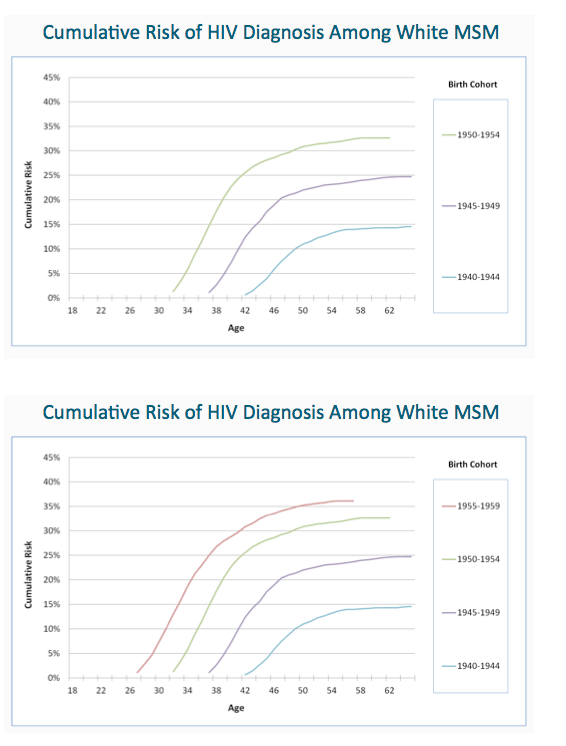

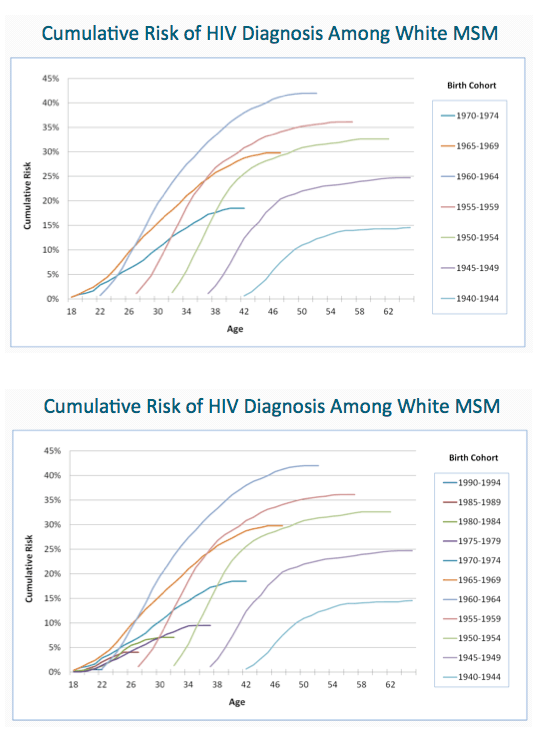

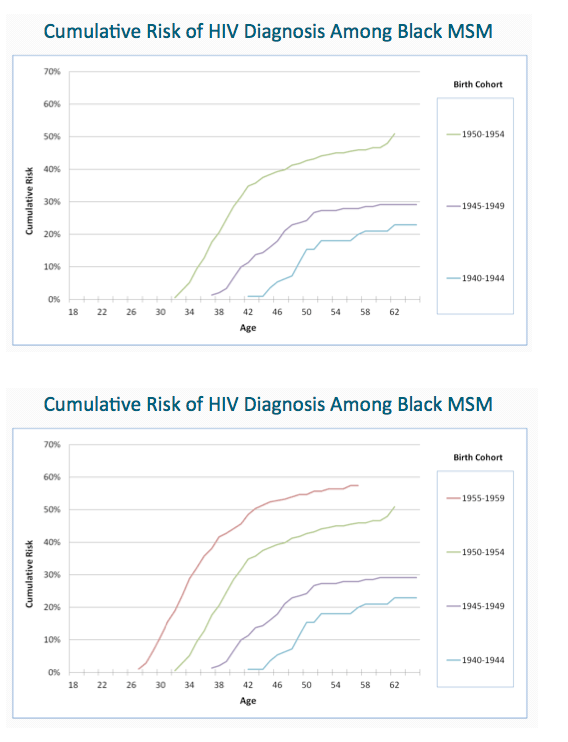
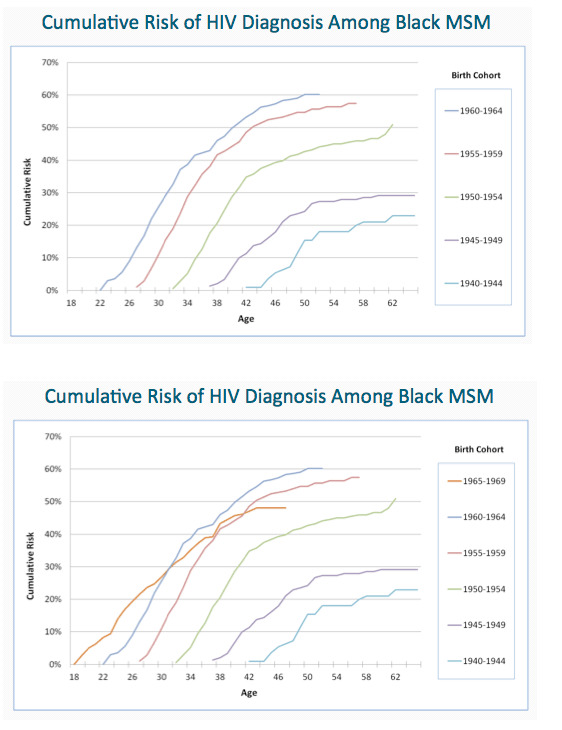
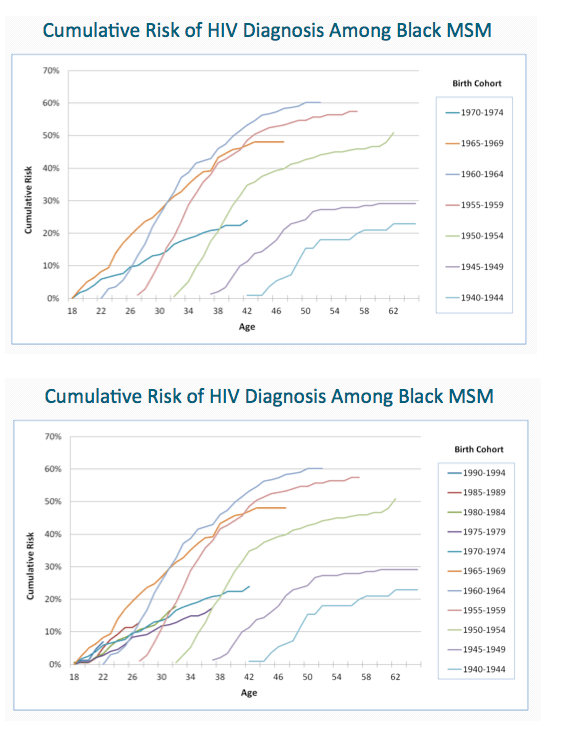
|
| |
|
 |
 |
|
|